
Ho Chi Minh
How to travel to Ho Chi Minh City for your best experience
Ho Chi Minh City Travel Guide – What to do, when to visit, and more…
________________________________________
Ho Chi Minh, “the second most dynamic city in the world” (published by JLL City Momentum Index 2017), also known as Saigon, is the economic heart of Vietnam and the main hub of the southern region. To travel to Ho Chi Minh City is to be introduced to a dramatic meeting of old and new cultures, a dynamic metropolis of skyscrapers and traffic juxtaposed with a wealth of ancient temples and traditional markets. The city is also filled with rooftop bars that overlook Saigon and beyond, while fantastic restaurants offer a combination of French, Chinese, and, of course, local Vietnamese cuisine.
Whether you’re traveling to Ho Chi Minh City for a quick stop en route to other parts of Vietnam or are planning a visit to the city exclusively, you will be won over the city’s frenetic energy and the many local gems just waiting to be discovered. For your best experience traveling Ho Chi Minh, let’s read our complete guide on where to go, what to do and when to visit and more…
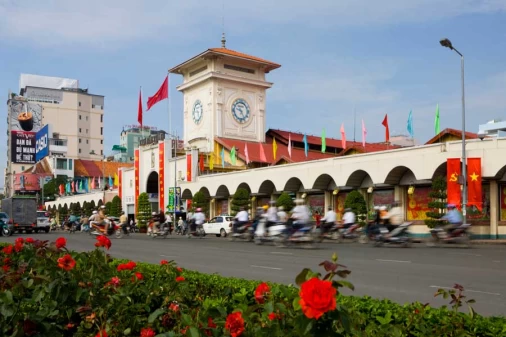
Ben Thanh market
If Dong Xuan Market is a cultural feature of Hanoi, Ben Thanh Market is one of the characteristics of...
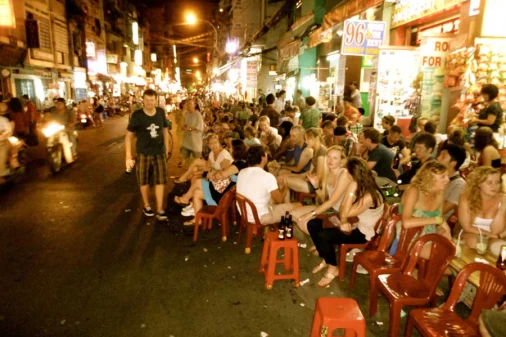
Bui Vien Street
Bui Vien grew out of the post-war stagnation by offering accommodations to those new global travelers...
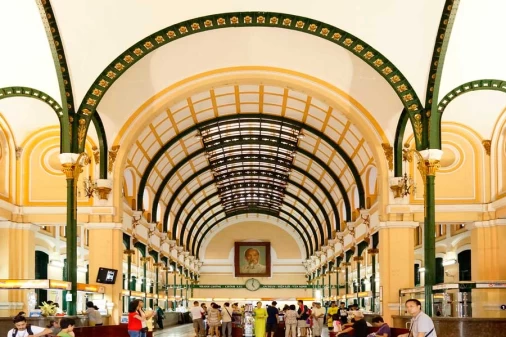
Central Post Office
Situated at No. 2, the Paris Commune Street, District 1, Saigon Central Post Office is one of the most...
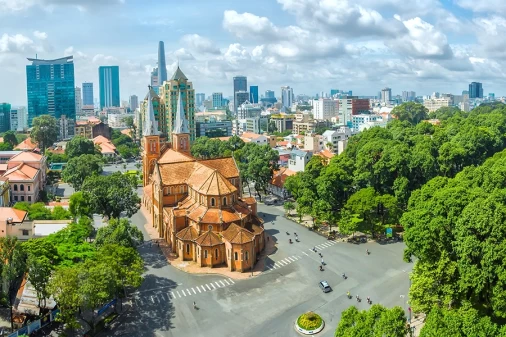
Cholon – China Town
The history of China and Vietnam is very closely linked, the presence of Chinese people in Vietnam has...
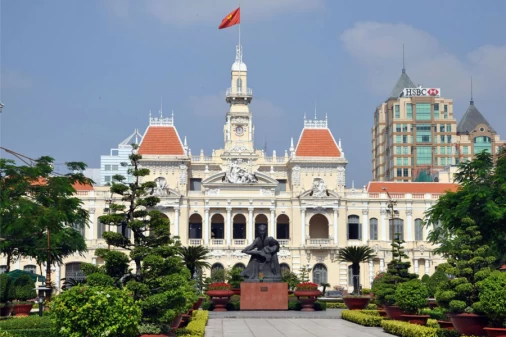
Ho Chi Minh City Hall
City Hall, or Ho Chi Minh City People’s Committee is located on an area of 15 hectares, at 135 Nam Ky...
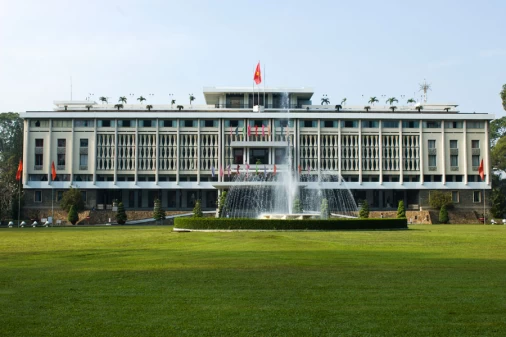
Independence Palace
The Independence Palace is a symbol of victory, peace and territorial integrity of Vietnam. Thanks to...
Frequently asked questions
1. Crawl through the Cu Chi Tunnels
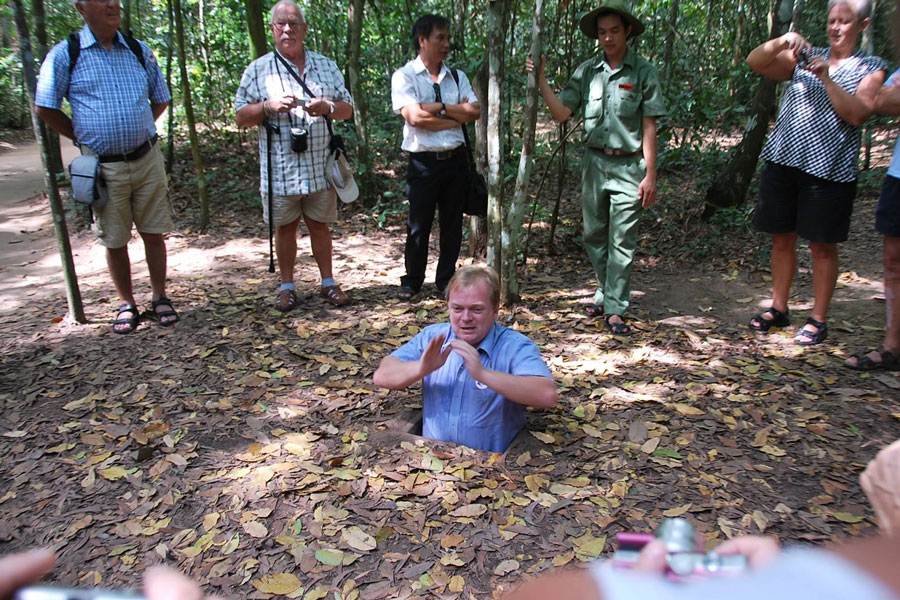
Cu Chi Tunnels is probably one of the most-visited places by tourists in Ho Chi Minh City. It takes you through a curated tour of the Cu Chi jungle to show you what subterranean life was like for the Viet Cong during the Vietnam War.
The site has over 120km of underground tunnels, with trapdoors, living areas, kitchens, storage facilities, armory, hospitals, and command centers. The Cu Chi Tunnels also host a shooting range. Visiting the Cu Chi Tunnels, you may experience crawling through the famed tunnels as well as firing a weapon used during the war like a real soldier.
2. History recall at the War Remnants Museum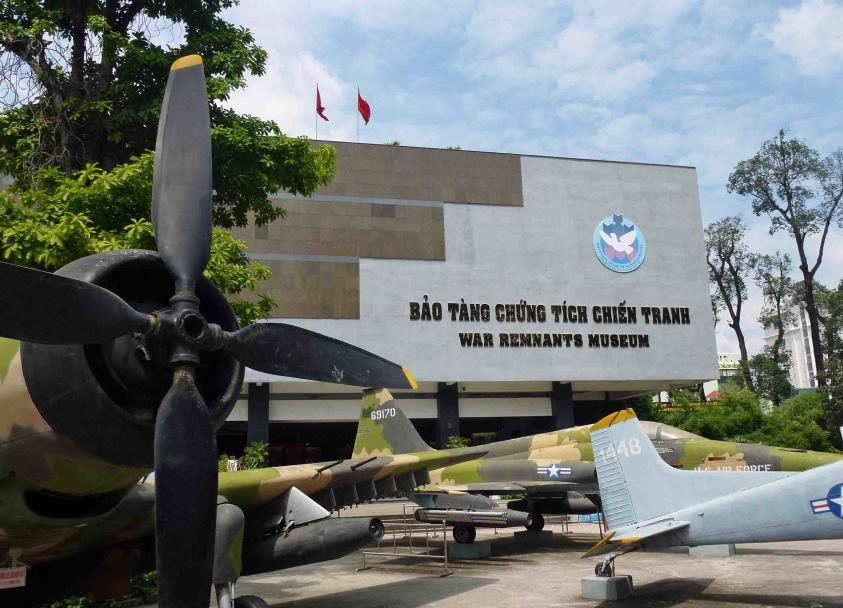
The War Remnants Museum recounts a tumultuous time in 20th-century Vietnamese history, documenting both the atrocities of the war and the aftermath of the conflict. There are immaculately preserved tanks, planes and other war machines on the outside grounds, but the really hard-hitting information is found inside.
Photographs, exhibits and written documentation show the horrific lengths that the American Army lowered themselves to in order to try and defeat the North Vietnamese Army. If you’re interested in learning about the war from another point of view, this museum offers a wealth of information as well as some compelling photo exhibits.
3. Admire the Notre Dame Cathedral
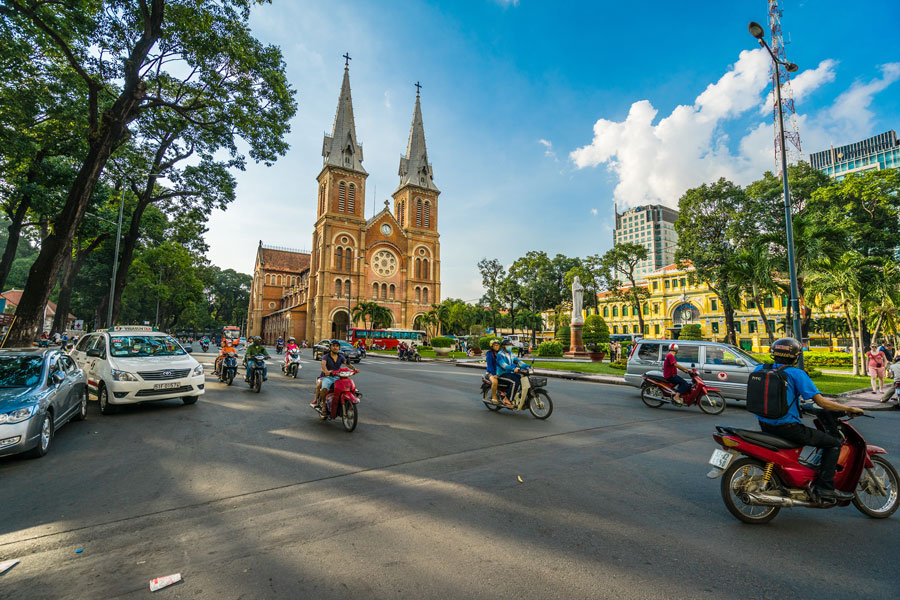
Built since 1883, the Notre-Dame Cathedral is another landmark that is located at the center of Ho Chi Minh City. The cathedral is an imposing red brick building with materials imported from France. The two towers in the front of the cathedral rise above visitors at nearly 58 meters tall while the neon-lit statue of the Virgin Mary is also an intriguing sight. In 1962, it was once officially declared a Basilica by the Pope. Today it is not only a church, but also a major tourist attraction.
4. Visit the Central Post Office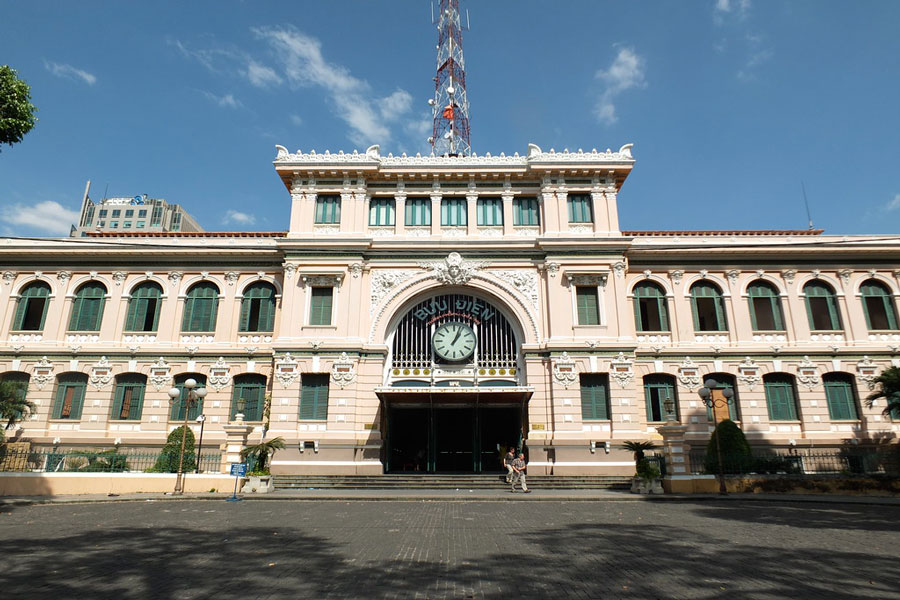
Right opposite the Notre-Dame Cathedral you will find another famous building – the Central Post Office in Ho Chi Minh City. This building remains its style in French colonial architecture.
The design was made by Gustave Eiffel, who also designed the Eiffel Tower in Paris. The interior is beautifully designed and there are also some souvenir shops for visitors inside. Though being a tourist attraction, but the Central Post Office still serves the purpose as a real post office as you could send some letters home to your family and friends.
5. See the Emperor Jade Pagoda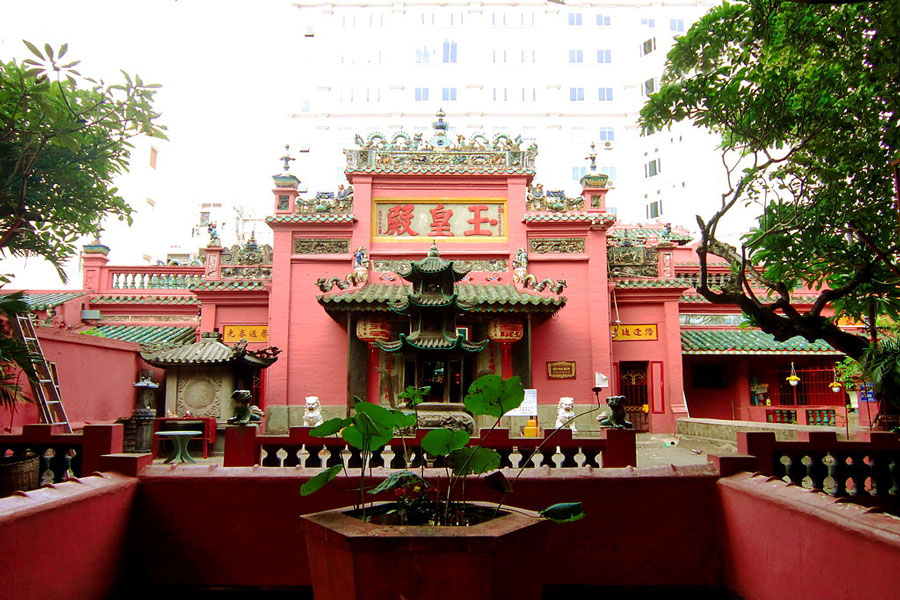
Emperor Jade Pagoda, also known as Tortoise Pagoda, is one of the five most important shrines in Ho Chi Minh City. This temple was built in 1909 to honor the supreme Taoist god, Emperor Jade. It’s one of the most impressive pagodas in Vietnam. The building is filled with intricate wood carvings and statues of divinities and heroes, including Emperor Jade himself.
The roof is also covered in detailed tile work showing characters from Buddhist and Taoist legends. With worshippers coming and going, the temple can get busy and feel a little cramped. Its dimly lit, the narrow passageways filled with smoke lend an atmospheric feel to the place, adding to its charm.
6. Visit Thien Hau Temple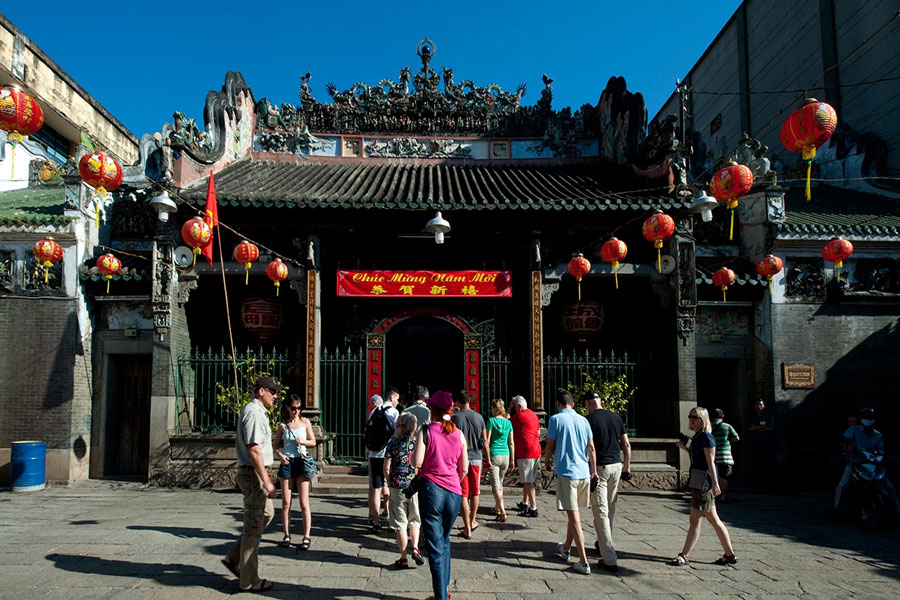
Located in Chinatown, Thien Hau Temple is a Buddhist temple that was built in 1706 for the Chinese sea goddess Mazu, the protector of the sailors. It’s believed that she flies around on a cloud or a mat, rescuing people at sea. The outside of the temple looks simple but the inside is filled with porcelain figures, and the roof is covered in colorful dioramas.
As soon as you step in, you will notice the smell of the incense sticks that are scattered throughout the temple and hanging from the ceiling. A really imposing temple which is definitely worth your visit.
7. Shop at the Ben Thanh Market
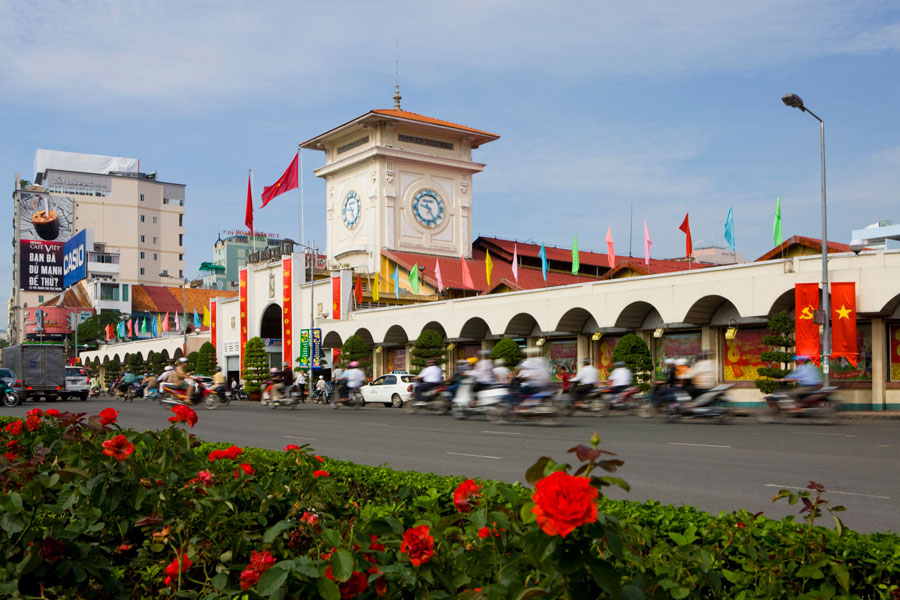
The Ben Thanh Market is one of the famous landmarks in Ho Chi Minh City, as well as the largest market in Vietnam. Every day thousands of visitors come to the market to stroll around and buy something. You can almost buy everything over here, from clothes, jewelry, souvenirs to some Vietnamese popular foods. So get lost in the chaos and enjoy it all.
8. Catch a show at the Opera House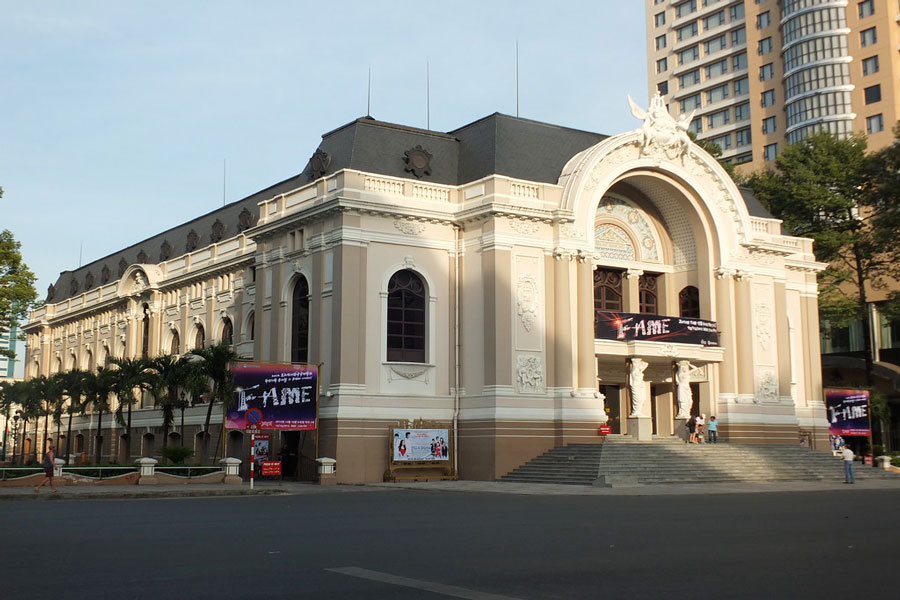
Located on the famous Dong Khoi Street, the Opera House in Ho Chi Minh City is one of the best-preserved examples of French colonial architecture in the country. It was built in 1897 for the opera but now also hosts lots of different performances, including ballet and Vietnamese traditional dances and plays. If you would like to see one, you should definitely not miss the Opera.
9. Watch Water Puppet Art at the Golden Dragon Theatre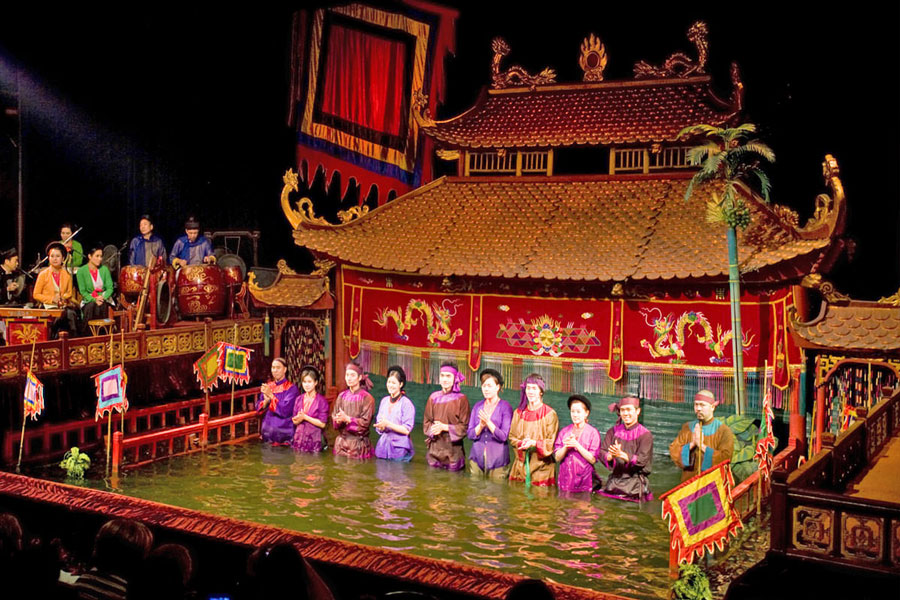
Water puppets are an ingenious concept and few people fail to be enchanted at their first encounter with these waterborne buffoons. The tradition of water puppetry is more popular in the north, but it’s such an appealing aspect of Vietnamese culture that there’s plenty of demand for shows in the south as well.
The early-evening timing of the shows makes them a fun activity with the kids before bed or dinner and consists of a dozen or so sketches on themes like rearing ducks and catching foxes, boat racing and unicorns playing with a ball.
10. Explore the Botanical Gardens (and Zoo)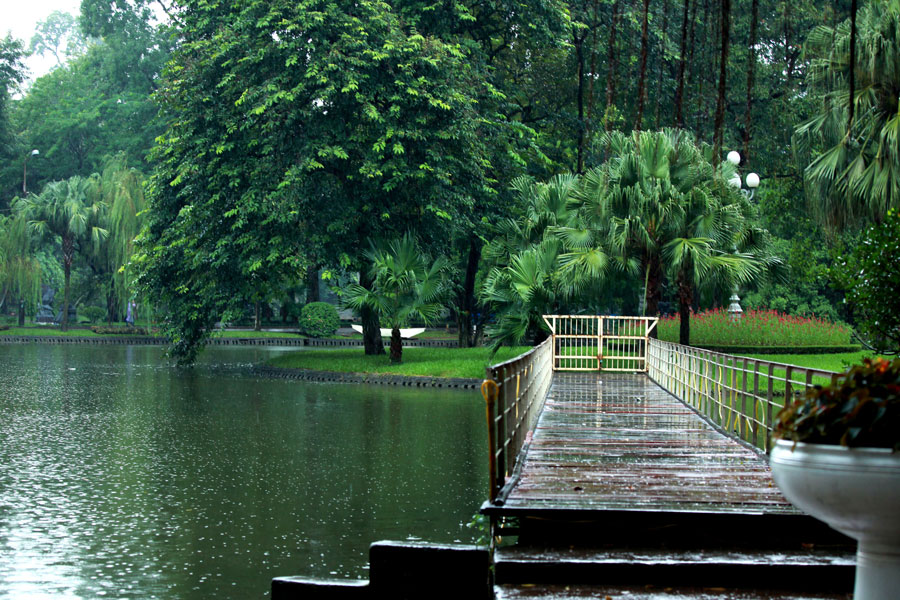
Established in 1864, the Botanical Gardens & Zoo is home to camels, elephants, crocodiles, and big cats, also komodo dragons. The gardens’ social function has remained unchanged in decades, and their tree-shaded paths still attract as many courting couples and families to gather to picnic and have fun during the weekend. There’s also an amusement park. And you can get ice cream or coconut from one of the several cafés sprinkled around the grounds.
1. Pho:
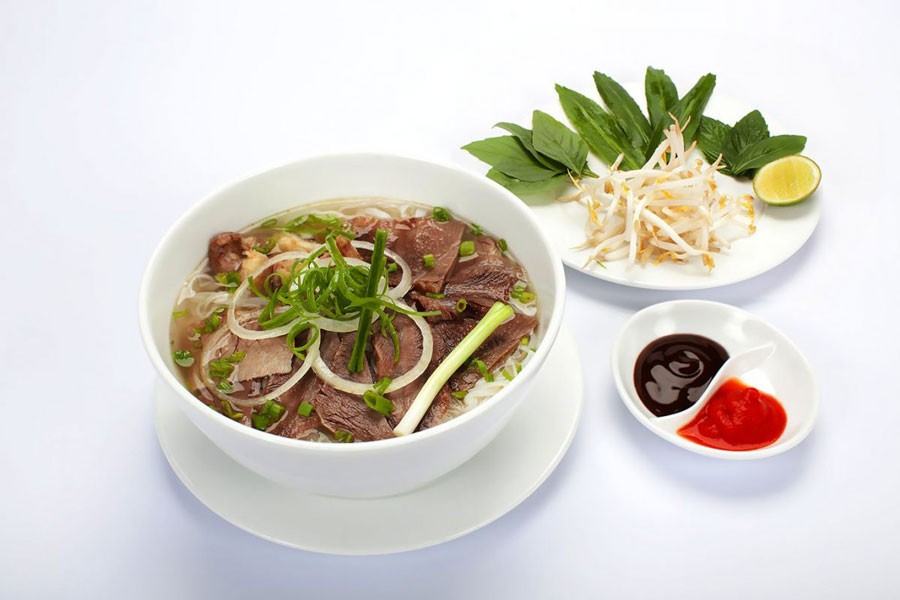
This noodle soup become so famous for a reason – it really is one of the most common dishes throughout the country, and it makes the Vietnamese food menu at nearly every sit-down restaurant too. Pho is the combination of soft rice noodles in a soup broth, normally prepared with either Bo (beef) or Ga (chicken) – both of which can be extremely delicious. The noodles are flash boiled until soft, topped with your choice of meat, and often finished with a sprinkle of chopped green onions and sometimes sweet onions as well.
2. Banh My:
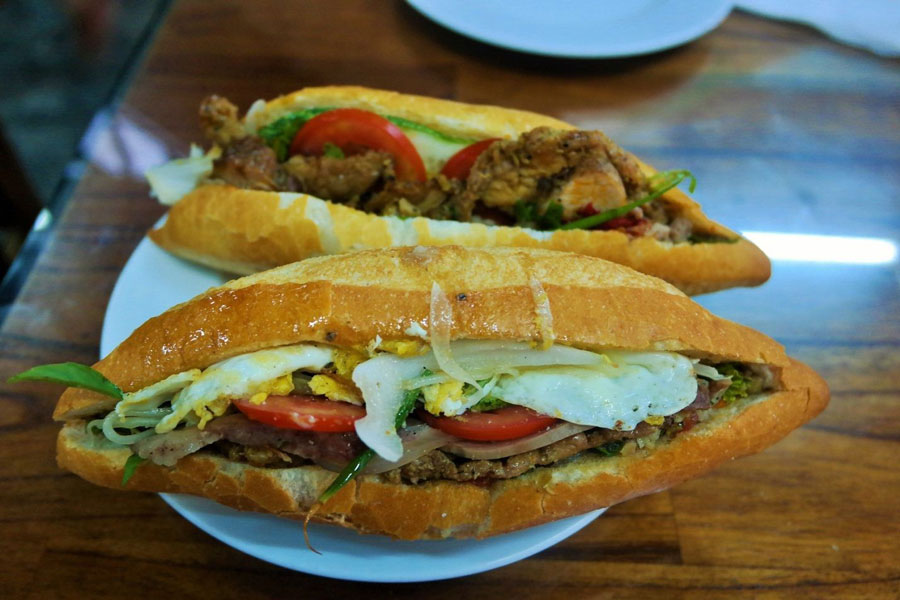
Along with Pho, easily the most exported Vietnamese specialty is Banh My. There are many different varieties of Banh My but the basic sandwich starts with a crusty baguette that’s sliced in half and stuffed with layers of pork, luncheon meats, shredded cured pork skin, paté, mayonnaise, Vietnamese radish, and carrot pickles, a handful of sliced cucumbers, sprigs of coriander, and last but not least, an optional, scoop of fresh pounded chilies. The sum of these ingredients together is what really makes Banh My such a glorious sandwich.
3. Bun Mam:
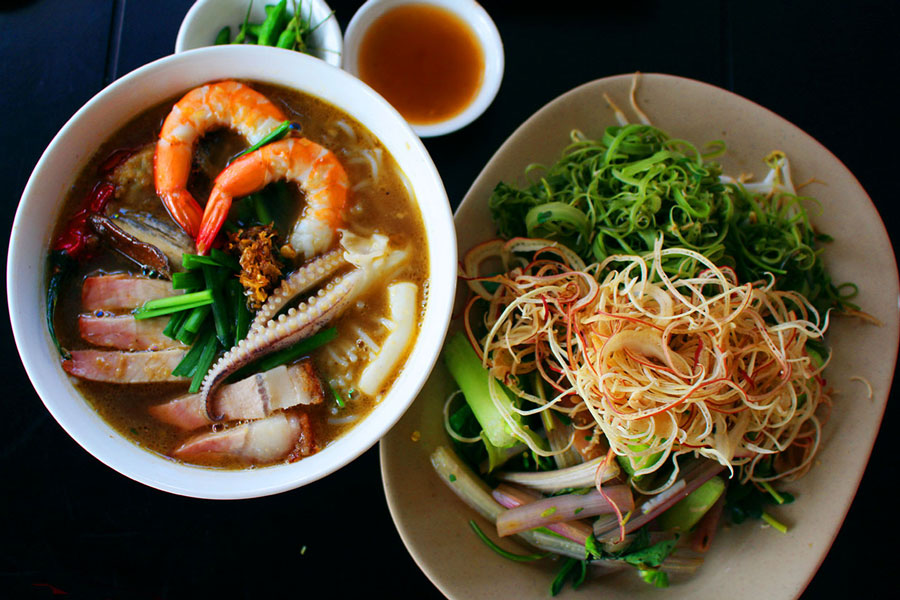
The base of any bowl of Bun Mam is a dark-colored broth prepared with fermented fish sauce. The fermented fish sauce gives the soup broth a well rounded, balanced flavor, and it’s honestly not nearly as fishy as it might sound or smell. Along with the broth, Bun (rice vermicelli noodles), are loaded into the bottom of the bowl, before the entire assortment of meats like squid, prawns, and pork are all scattered on top of the noodles. Finally, a slice or two of eggplant, which soaks up all the broth, is another essential component of a bowl of southern Vietnamese Bun Mam.
4. Banh Xeo:
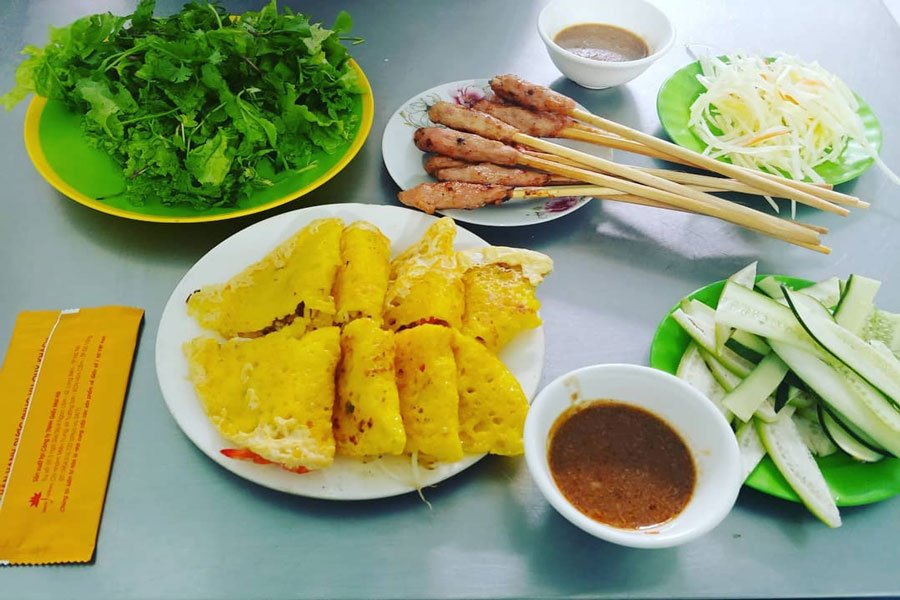
Just like Banh Mi sandwiches, Banh Xeo is a bit of French-inspired Vietnamese culture creation. A thin layer of batter is fried in a lot of oil, then combined with your choice of ingredients, often including slices of pork belly, shrimp, and onions, then folded over with a handful of lightly cooked bean sprouts in the middle.
5. Com Tam Suon:
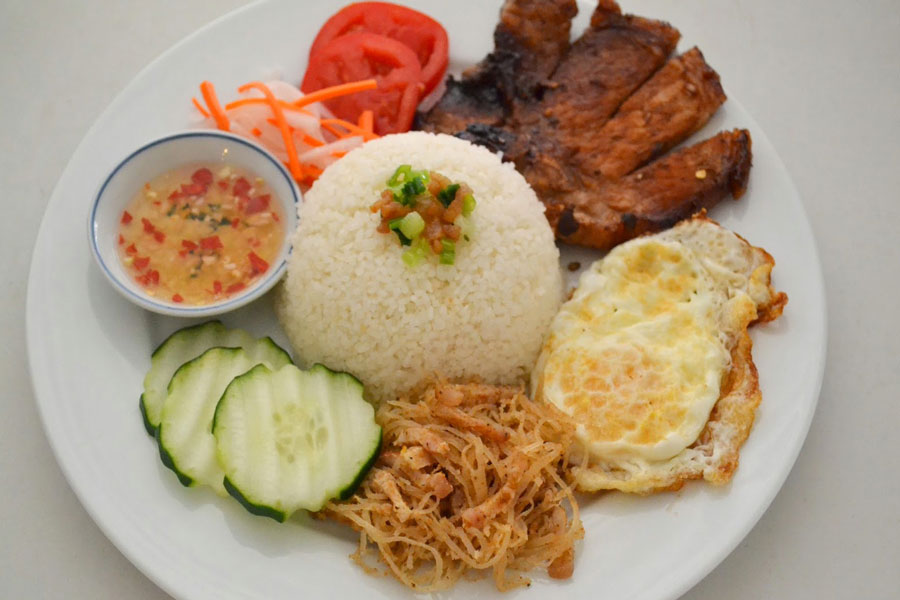
As one of the most common meals of Saigon, especially known as a southern favorite, Com Tam Suon is the combination of rice (which is often broken rice, which are partially broken grains of rice that occur in the milling process), topped with a grilled pork chop, served on a plate and accompanied by fish sauce dressing, cucumber pickles, green onion oil, and chilies to garnish. This dish can be consumed as breakfast, or dinner and is easily found anywhere, from the food stall at a street corner to the high-grade restaurant.
Assuming you only want to see the best of Ho Chi Minh City before moving on to other parts of the country, then two days is enough. Let’s refer to our suggested 2-day itinerary traveling Ho Chi Minh while you are planning to visit here.
Day 1: Ben Thanh Market – Notre Dame Cathedral – Central Post Office – War Remnants Museum – Opera House

AM: Start your morning with a jaunt to Ben Thanh Market, the city’s most famous trading center, before walking a block over to Dong Khoi to visit Notre Dame Cathedral and Central Post Office.
PM: Visit the War Remnants Museum, recall some historical lessons. Then head to the Opera House to admire its architecture and join a traditional music show. Move to Bui Vien at night and have some fun at a local pub.
Day 2: Cu Chi Tunnels – Water Puppet Theatre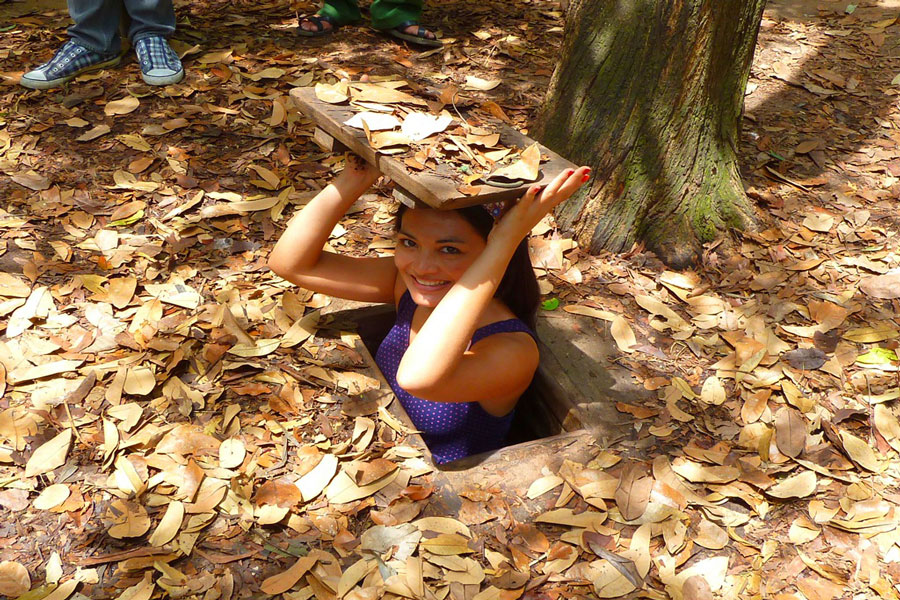
AM: Book a tour to Cu Chi and enjoy a day to be a soldier. Learn the way to survive and experience shooting with a firearm.
PM: Book a ticket at Golden Dragon Theatre to watch a Water Puppet show. Then enjoy a free time strolling around Nguyen Hue street for sightseeing and street foods experiencing.
If you are a veteran backpacker, please feel free to manage the trip your own and alter it when needed, else, we recommend you join a tour organized by a professional company, that can free you from hassles and keep you safe throughout the journey.
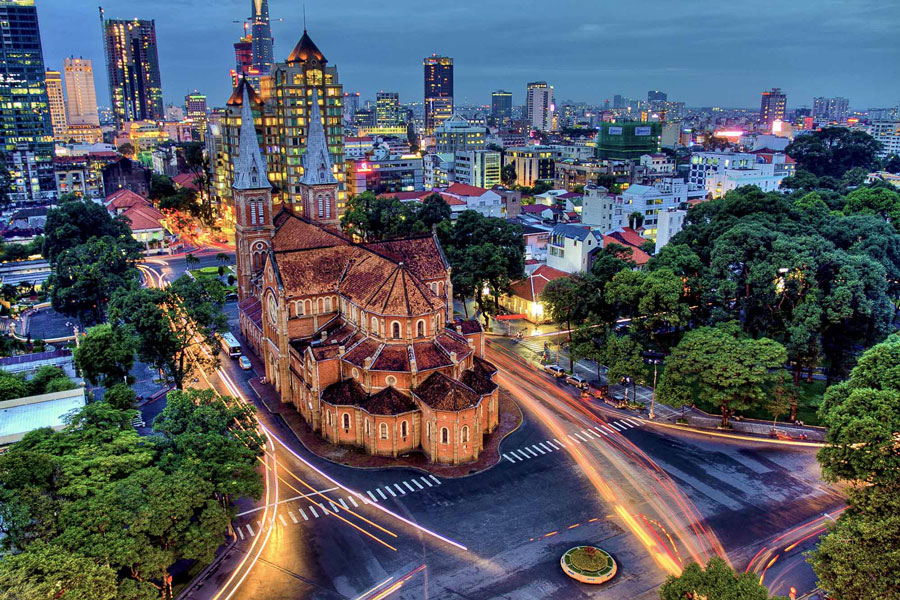
The best time to visit Ho Chi Minh City is during the drier months of December to March when temperatures range between 21°C and 34°C. Many like to visit during the Tet Festival (Vietnamese New Year) in late January or early February. The whole country joins in the festivities and it’s a colorful spectacle, but the prices are higher and getting around may be difficult due to the large numbers of people traveling.
May to September sees frequent showers that can make transport more complicated, sometimes washing out roads and cutting off remote villages. But more often than not, the rains tend to come in short bursts, so it’s possible to still enjoy sunny days during these wet summer months. The peak period for typhoons to hit Ho Chi Minh City is from July to November.
Throughout this article, we wish you to have an idea of how to travel to Ho Chi Minh for your best experience. In case you are looking for your own travel agent, who can offer a wonderful and hassle-free trip to Ho Chi Minh, please feel free to let us know. We always commit our best to make it your once-in-a-lifetime journey.
You may also like
Ho Chi Minh Essentials
- Depart Time:Daily
- Starts/Ends:Ho Chi Minh/Ho Chi Minh
- Tour type:Private Tours
- Age range:1 To 90 Years
- Operated in:English, French, Spanish, German, Italian
Discover Vietnam’s Southern 6 Days
- Depart Time:Daily
- Starts/Ends:Ho Chi Minh/Ho Chi Minh
- Tour type:Private Tours
- Age range:1 To 90 Years
- Operated in:English, French, Spanish, German, Italian
Unique Mekong Delta Tour 5 Days
- Depart Time:Daily
- Starts/Ends:Ho Chi Minh/Ho Chi Minh
- Tour type:Private Tours
- Travel Style:Nature & Adventure, Family Tours, Culinary Tours
- Activities:Local culture tours
- Suitable for:Family, Group, Couple
- Operated in:English, French, Spanish, German, Italian
 France
France  Spain
Spain  German
German  Italian
Italian 




 Vietnam Tours
Vietnam Tours  Cambodia Tours
Cambodia Tours  Myanmar tours
Myanmar tours  Thailand Tours
Thailand Tours  Laos Tours
Laos Tours